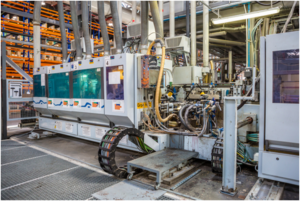
With today’s technological capabilities, we live in an age of unprecedented innovation and opportunities for entrepreneurs. Global patent applications reached a record 2.9 million in 2015, driven by growth in China, the U.S. and Japan, the World Intellectual Property Organization reports. But just over half of patent submissions in the U.S. actually get granted, U.S. Patent and Trademark Office data shows. Turning a great idea into a physical product takes more than just a spark of inspiration. Producing a tangible product is a process that takes know-how and hard work. Here’s a four-step guide to developing your idea into a physical product.
Table of Contents
Start With a Sketch
The journey toward a physical product starts with a concept sketch. Putting your idea down on paper will help you visualize your concept with greater clarity, fleshing out the details you will need to turn it into a working product.
While doing this step on a computer has become more popular in recent years, there are some advantages to doing your initial concept sketches on paper. Sketching on paper can inspire you to develop multiple versions of your idea. Additionally, preserving your drawings in a notebook will create a paper trail you can use when you submit your patent, which can help you protect your intellectual property rights. To verify when you made your drawings, date them and have them signed by a witness. Follow the guidelines for drawing submissions found on the USPTO website, which specify requirements such as what size of paper to use and how to properly label drawings.
Digitize Your Design
After getting your ideas down on paper, the next step is to create a digital version of your product design. A popular digital drawing tool used by engineers is AutoCAD, which can create both two-dimensional and three-dimensional digital models of your product. A 3-D rendering helps you visualize your product more realistically by rotating it and animating it, which can stimulate new inspirations and help you work out bugs. For an even more realistic view, you can use tools such as NVIDIA to turn your 3-D rendering into a photo realistic rendering. If you don’t have access to these types of tools or aren’t skilled at using them, you can hire a graphic design or prototyping company to help you with creating digital drawings and photo realistic renderings.
Build a Tangible Prototype
Your virtual design gives you a basis for creating a physical prototype of your product. You can build a prototype yourself if you have the skill and the means. Otherwise, there are several resources you can use. Rapid prototyping services specialize in helping companies build prototypes quickly and inexpensively. Many 3-D printing companies also offer rapid prototyping services. You can also hire an engineer or a designer. If you’re on a tight budget, you can place an ad at a technical college or hire a handyman.
After building your prototype, you may discover design flaws. These should be fixed before you apply for a patent. You may end up building several prototypes. To save money, consider building your first prototypes out of less expensive materials until you’ve debugged your design. Materials such as modeling clay, hand moldable plastic and sugru can provide an affordable way to work on your initial prototype.
Find Manufacturing Suppliers
You can apply for a patent for your product once you have a prototype. However, before you settle on your final design, research manufacturing suppliers to get an idea of what your production costs will be and whether you should consider alternative designs or materials for cost reasons. Research different suppliers to compare costs by consulting a resource such as ThomasNet. Contact multiple suppliers to request quotes and find out other important information, such as what their minimum order quantity is for bulk purchases.
It’s wise to test a sample from your supplier to verify it meets your needs before going into full-scale production and paying for bulk orders. Many suppliers are willing to provide samples at a reduced cost or free. For instance, seal manufacturer Apple Rubber provides a form on its site where clients can order free samples of customized o-rings in thousands of sizes. Testing a sample can save you the expense of paying for a bulk order of a part that doesn’t fit your product.

